
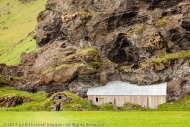
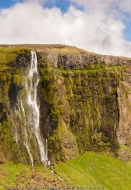
Death Valley. Sounds enticing, doesn’t it? Do I have to die if I go there or can I just look at all the dead stuff that’s already there and leave quickly? Maybe head over to Vegas. I hear it’s nearby.
Well, it turns out that my earliest memories are from Death Valley. No, really! It’s true that I grew up in New Orleans, nowhere near California, but when I was four, my parents and I hopped in the car and headed for the Seattle World’s Fair. Let me assure you, when you drive from New Orleans to Seattle, you pass a lot of National Parks on the way, and one of them was Death Valley. (Technically, it was a National Monument when I was a kid, but was expanded and upgraded by the Desert Protection Act to a National Park in 1994, making it the largest national park in the contiguous United States.)
So let’s think about this for a moment. World’s Fairs typically take place in the summer, and this one was no exception. And Death Valley tends to run on the hot side. In fact, Death Valley is the site of the hottest temperature ever recorded on the planet. Did you get that? THE HOTTEST TEMPERATURE EVER RECORDED ON THE PLANET! I was pretty sure it was the day we drove through, but sources tell me the record was actually set in 1913. The temperature, in the shade, of course, was 134°F. Yikes!
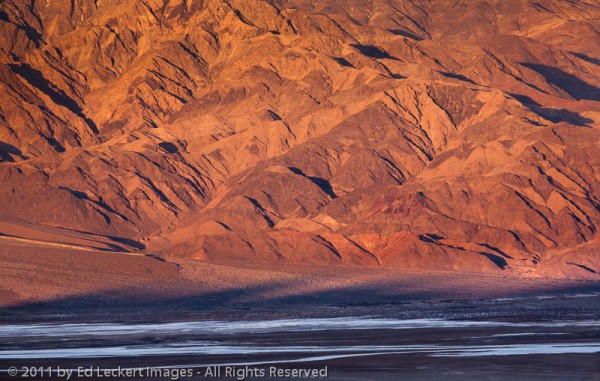
Early morning sun lights the Panamint Range while the salt flats of Badwater await the day’s heat, viewed from Zabriskie Point in Death Valley National Park, California.
Well, it was probably only about 130 the day we drove through in our unairconditioned car in the summer of 1962. And what do I remember? The only thing I remember is stopping every mile or so to fill up the radiator with water the National Park Service had so kindly left for us before they all left to go work somewhere cooler. Back in those days, automobile radiators did not have overflow tanks. When the water boiled over, which it did fairly often even in less harsh conditions, the water just went on the highway, and you had better have more to replace it or you weren’t going anywhere. Well, in Death Valley in the summer, that’s not just inconvenient, it’s deadly. So they left water for us. And that’s all I remember. I suspect it’s all I remember because that’s probably all we did. I can almost hear my mother calmly discussing the decision to drive through Death Valley in the summer with my father. Yeah.
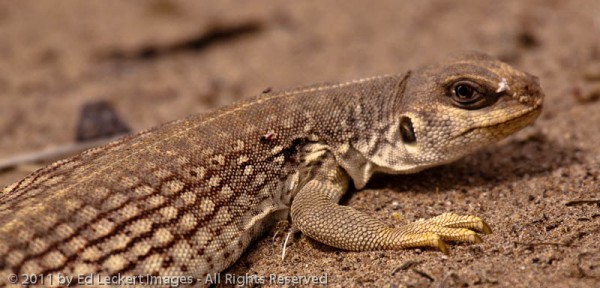
A wary Desert Iguana (Dipsosaurus dorsalis) keeps one eye on the photographer near Ashford Junction, in Death Valley National Park, California.
Anyway, that was a long time ago. Much more recently, back in 2011, I decided to go back to Death Valley to get a better look. Having a newly rekindled passion for photography, I thought it was time I try my luck in the desert, one of the more challenging places not only to survive, but to capture compelling imagery. Or at least that’s what most people think as they drive by at 60 miles per hour through barren stretches of highway.
It turns out that photography in the desert is really not all that different from photography anywhere else. You have to stick around long enough to see what the place has to offer, to study its nuances, and to learn its secrets. You have to be there when the light is right, when the weather is right, when the wildlife is out, when it looks amazing. You can’t just drive by at high noon on a random day and stick your camera out the window of the car and expect to get anything – not in the desert, not anywhere.
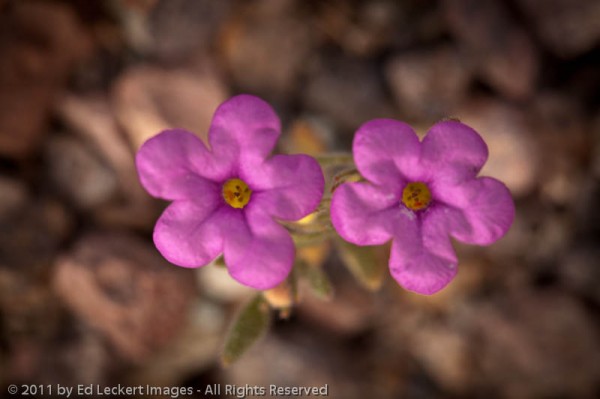
This tiny annual loves flat clay and sandy soils. In favorable years the plants spread enough to form broad, colorful mats. In dry years a plant may bear but a single flower.
So my plan was to go in the Spring when temperatures were just starting to get warm in the basin, the snow would be mostly melted at the higher elevations, there should be some wildflowers somewhere in the park, and I could camp comfortably and safely. I chose March. I would rent a four wheel drive SUV, fill the back with extra water, a tire repair kit, and an electric air pump, and camp for nine days at two or three spots in the park and see what happens. Oh, I also bought a Personal Locator Beacon, just in case.
I started in the south because I heard the wildflowers were blooming at Ashford Junction. Sure enough, I found a sea of yellow flowers blooming there.
I explored famous areas like Badwater and Devil’s Golf Course, which I found extremely difficult to photograph well. While I was out there a group of kids drove up in a jeep with a tire going flat and asked for my help. It seems that for the $200+ a day rental fee they don’t include a jack that can lift a jeep high enough to change a flat. Well, I certainly didn’t have one either, but fortunately another jeep arrived that was suitably equipped.
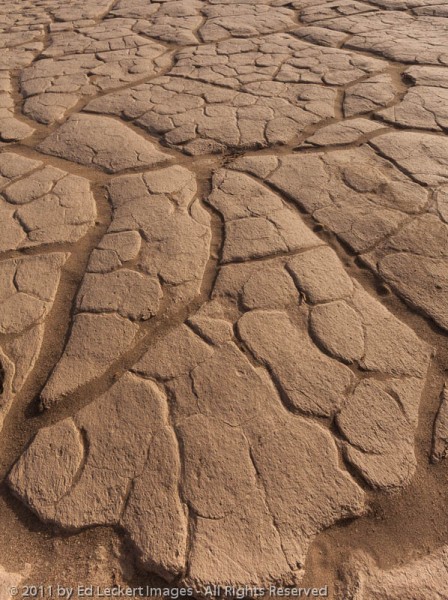
Polygon-cracked clay of an ancient lakebed near Mesquite Flat Dunes, Death Valley National Park, California
After a couple of days of camping at Furnace Creek, I decided to head north and explore new areas. I found a cozy little ten site tent-only campground at about 2000 feet elevation, much more pleasant than the RV farm down at Furnace Creek. I then went back down to the Mesquite Flat Sand Dunes to plan my morning shoot. I didn’t want to be wandering out onto the dunes for the first time in the pre-dawn darkness. Well, just as I got well out onto the dunes, I looked up and there was a huge wall of sand coming toward me out of the north! I didn’t waste any time heading back to the car, and almost made it before this sandstorm completely blotted out the disk of the sun and covered the landscape. I got in the car and waited a while before deciding that it wasn’t going away any time soon, so I started the car, hoping the air filter would do it’s job, and limped back to the restaurant a couple of miles away in Stovepipe Wells. They told me there that the storm could last for days. Well, so much for that high contrast image of the dunes I had envisioned at first light. Pint of IPA and a burger, please.
When I got back to my campsite one night, the wind was really blowing up at that elevation as a storm moved in, and in the headlights of the vehicle, my eyes could not make sense of what I was seeing where my tent was supposed to be. Only after getting out and walking up to it did it come into focus properly. It seems the stakes had started to pull up in all that wind, so a concerned neighbor had thrown a large rock inside my tent. The tent was folded up around that rock, looking really strange blowing in the dark!
I got my tent restaked using rocks, and that was the first of three nights of high winds and heavy rains. I didn’t sleep much that night for fear that the entire assembly of tent, rocks, and myself would soon be blown unceremoniously down into the valley. By the second night I realized my tent was handling the beating it was taking, and I slept like a baby while the tent twisted and turned violently, inches above my nose.
Manly Beacon towers over Death Valley at dawn, viewed from Zabriskie Point, Death Valley National Park, California.
All in all it was a good trip. I didn’t return with any award-winning imagery, but I did learn a lot about the park, and I also gained a deeper understanding of what it’s like to be out in a strange and distant place on my own. I have other places I want to visit first, but I hope one day to return to Death Valley to try again to uncover its secrets. Until then, I’ll have to be content with the images from my first attempt. Someday!

Thank you for sharing your experience. Beautiful photo’s.
Thanks, Sue-Z!